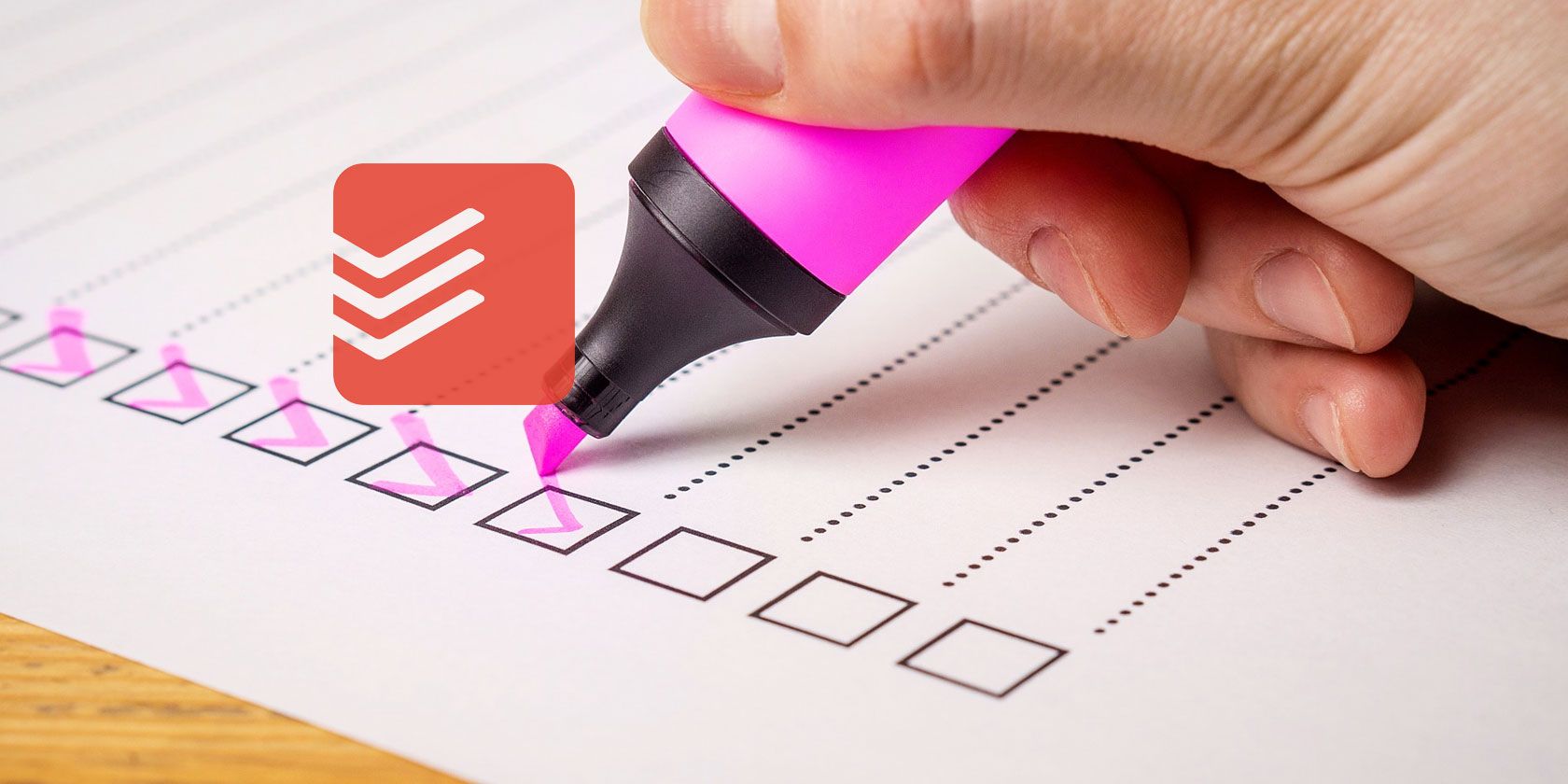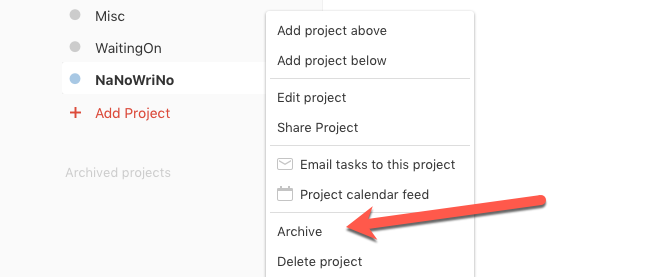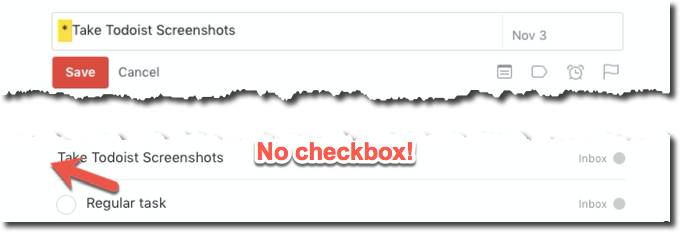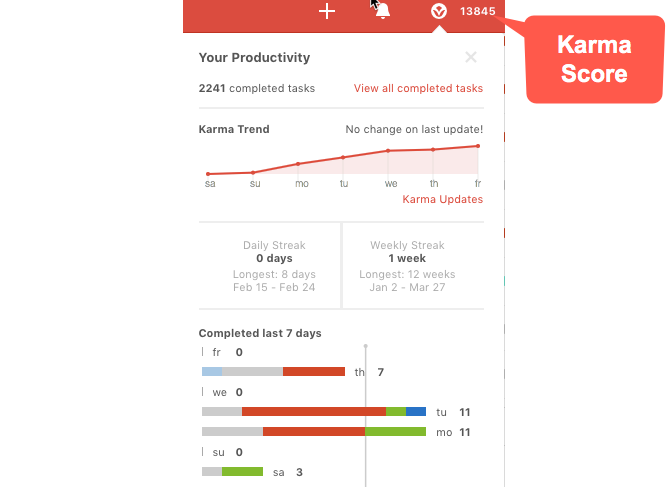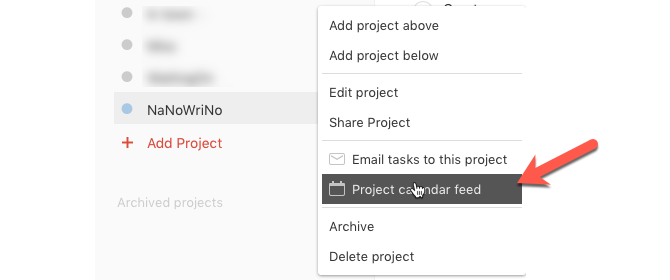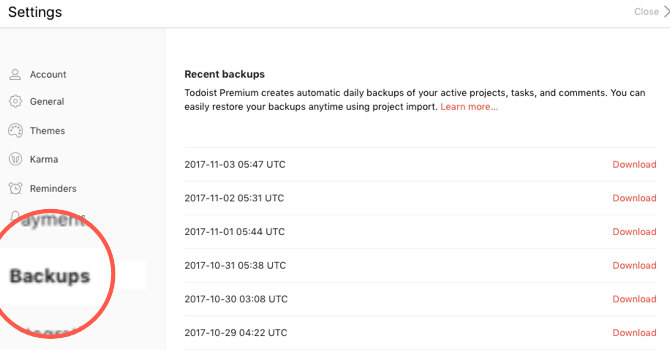It's hard to think of many additional features that could make Todoist an even better task manager. It's already got pretty much everything you could possibly need, especially if you cough up for the Premium subscription.
We're talking everything from natural language recognition and powerful filters to third-party integrations, and more.
But there's a lot more to Todoist than meets the eye. We've delved deep into this powerful task manager to bring you 11 underused features that could help you get even more out of the app.
1. Use Completion Dates to Schedule Recurring Tasks
Recurring tasks are a standard feature in Todoist. They're usually pretty simple, such as "Go to the gym every Monday." Sometimes they go one step further, including a start or end date, such as "Go to the Gym every Monday starting Jan 1."
But there's a little trick to make recurring tasks even more powerful. This trick allows you to schedule the next occurrence of a recurring task based on when you last completed that task.
To do this, all you have to do is add an exclamation point after the word "every." For example, "Go through my RSS feed every! two weeks." The next instance of this task will now be scheduled two weeks from the last time the task was completed, rather than from the day the task was originally scheduled.
2. Hide Projects You Haven't Started
If you're struggling to juggle a ton of projects simultaneously, hiding projects you're not currently working on will make the Active Projects panel seem a lot less daunting.
Interested? Just archive any projects that you don't want to be reminded of until you're ready to tackle them! To do this, hover over a project, click the ellipsis, and hit Archive. The project and it's corresponding tasks will no longer appear in your list of active projects (note: they won't be included in backups, either).
When you're ready to start on the project, unarchive it by clicking the subtle Archived projects button below your active projects (see above). Hover over the project you want to start, click the ellipsis, and select Unarchive.
3. Learn Some Keyboard Shortcuts
If you religiously use Todoist to organize your life, it'll be well worth your time to learn a few shortcuts to make adding and organizing your projects much easier. You can see the full list of available shortcuts here.
Other than pressing Q to add a new task, and U to undo your last action, in my opinion, these are the most useful shortcuts to use as you're creating a new task:
- Type p1, p2, p3, or p4 to set the priority level of a task.
- Type @ to select a label for a task (Premium)
- Type # to add the task to a specific project
- Click CTRL+M to add a comment to a task
4. Start Using Project Templates
If you want to be able to duplicate a project at a later date, along with all of its corresponding tasks and settings, you'll love Todoist templates.
Create your project as you usually would, making sure you use relative dates such as "in 7 days" instead of specific dates. This ensures your task scheduling for that project is always up to date. Once done, click on the settings button within the project, and select Export as Template. The entire project along with all of its settings will be downloaded as a plain text file. Store this somewhere safe.
Then, whenever you like, you can share this project template with friends and colleagues. Or, you can click Import from Template to add a fresh version of that project to your own account. This saves you from needing to set up that entire project from scratch every time you need it.
5. See All of Your Recurring Tasks at Once
At first sight, it's not entirely obvious how to view all of those recurring tasks you've set up. Well, as luck should have it, it's easy enough.
All you have to do is go to Filters, then click Add Filter. Name the filter whatever you like, and in the Query field, type Recurring, then click Add Filter. Whenever you click that filter, you'll see a full list of all your recurring tasks so you can easily keep them up to date and delete those you no longer need.
6. Tasks That Can't Be Completed
By default, all tasks in Todoist have a checkbox displayed alongside them. But if for whatever reason you want a task listed without a checkbox, just start the task name with an asterisk followed by a space.
When it comes time to delete the task, simply remove the asterisk, and click the checkbox.
7. Visualize Your Productivity
At the top right of the Todoist app, you'll see your Karma score, which is basically just a way of keeping you motivated. Click that Karma score, however, and you'll see a visual representation of your productivity.
You'll be shown the number of tasks you've completed, your most productive days, and which projects you've completed most tasks for.
8. Format Text and Add Hyperlinks
If you want to add some basic formatting to your main tasks and comments, that's possible, too.
- Bold: **bold**
- Italic: *italic*
- Bold & italic: ** *bold & italic* ** or * **bold & italic** *
- Hyperlink: http://makeuseof.com/ (Text)
- If you want to use emojis, just copy and paste them into Todoist.
9. Automate Your To-Do List
By linking your Todoist account to the automation platforms IFTTT or Zapier you'll be able to automate at least some aspects of your to-do list.
With IFTTT (my favorite automation platform), you could set things up so that each time you save an article to your Pocket reading list, it's added as a task on Todoist. If a Trello card is assigned to you, that can be added as a task, too. You can even set things up so that when you label an email "Urgent" in Gmail, a new task is created.
Interested? We've published a more in-depth guide to using Todoist with IFTTT.
10. Sync Projects With Your Calendar (Premium)
Each project you set up in Todoist has its own iCal URL, which means it can be synced with your calendar of choice.
To do this, click the ellipsis next to a project or sub-project, then click Project Calendar Feed. You can then click to automatically add the feed to your Outlook or Apple calendar.
If you want to add the feed to your Google Calendar, you'll need to copy the iCal URL, then head over to Google Calendar. Click the drop-down button next to Other Calendars, and click Add by URL. Paste the URL, and click Add Calendar.
Do this for all the projects you want. All of the tasks from those projects will be displayed on your calendar.
11. Back Up Your Projects and Tasks (Premium)
As a Premium user, your projects and tasks are automatically backed up each day by Todoist.
So, if you accidentally delete a project, and you don't want to create it again from scratch, it's easy enough to restore. Just click the gear icon, settings, then click backups. Download the backup you need. This will be a Zip folder that contains a CSV file for each of your current projects (archived projects and completed tasks are not included).
Drag and drop the project file into a new project on Todoist, and all the tasks that were there to begin with will be restored.
The Best Task Manager?
With all of its standard features, mixed with a multitude of hidden extras, it's hard not to see Todoist as the true benchmark among the various task manager apps.
Yet along with all of this, there are probably more tricks, tips, and features out there that most users barely touch (but should) in order to become more productive. If you know of more Todoist features like these, please let us know in the comments.
We've got even more Todoist tips! Use our excellent Todoist shortcut cheat sheet to become a master.

